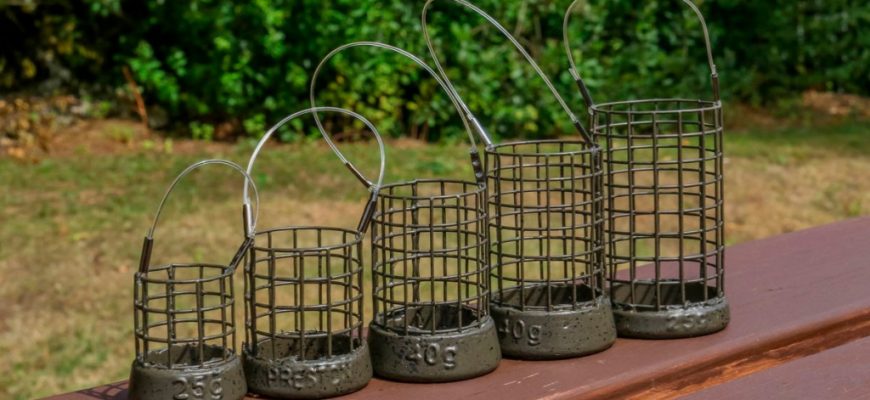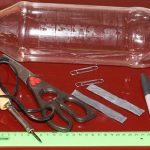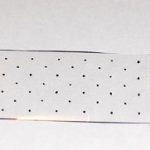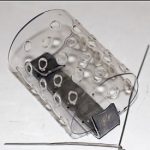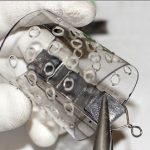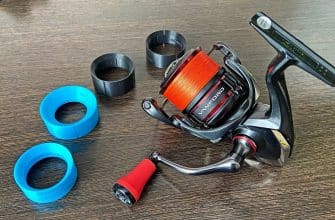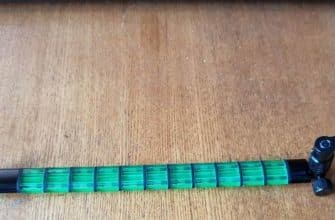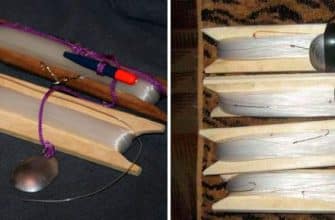Do-it-yourself feeders for fishing, home-made springs for summer and winter fishing with and without current, home-made kormaks from a bottle, springs, corks and other options with a photo. If fishing takes place on a peaceful fish that seeks food with the help of smell, tastes it, then such a thing as bait helps most of all in this fishing. And feeders allow you to make the use of bait as effective as possible. Unfortunately, the store does not always have the necessary kormaks, and those that are are not cheap. Therefore, anglers often make do-it-yourself fishing feeders. Let’s see what homemade fishing feeders are and how they can be made at home, or even right on the pond. When carp are caught on top of a layer of grass, such a homemade fishing feeder simply works wonders. Due to its size and weak negative buoyancy, it hangs on the cilia of the hornwort, preventing the hook from sinking too deep. She attracts a crucian with a smell, but he does not find anything but a nozzle on which he pecks. Homemade feeders for fishing from plastic bottles for float fishing are more often used in the current. They make such a homemade feeder for fishing from square bottles with a flat bottom. They are installed in the fishing area, when the bait can be easily carried away by the stream – for example, if millet porridge is used with a small amount of breadcrumbs. In this case, the feeder is installed approximately opposite the angler. Then he casts the bait so that the nozzle stays near the feeder for as long as possible and in the bait spot, which is formed when the feed is washed out of it. [caption id="attachment_14065" align="aligncenter" width="550"] There are also more compact options for such a feeder – for example, using a net into which complementary foods are poured. However, as practice has shown, they give bait too inefficiently than in the case of a bottle, at first – too actively, and then – very weakly. Homemade feeders for fishing on the ring are very similar to those that were previously described for fishing with a float or on a feeder. However, they can have a larger volume and weight, since they do not need to be thrown by hand from the shore, but are lowered vertically from the boat. A feeder for fishing on a ring should have a large feed capacity, and give food more actively, because here it can be repeatedly raised and refilled, and a large current far from the shore can wash out the food more actively. You can make a feeder with a net for fishing with your own hands from an old air filter from a truck, such as KamAZ. [caption id="attachment_14066" align="aligncenter" width="500"] Unlike feeders designed for float fishing from the shore, such a feeder can be made from a regular fine mesh net – for example, from an old landing net. At the bottom you need to lower the load, which is attached to the rope. And at some distance, fix the net and tie it so that it stands vertically in the water column. Unfortunately, such a do-it-yourself feeder made from fabric mesh can be short-lived. There are frequent cases when she was torn on fishing and there was nothing to replace her with. But this is the easiest option of all. This is the largest class of feeders in use. They, as a rule, are connected together with the fishing gear and are also a sinker. Not far from the feeder is a hook with a nozzle. The fish comes, attracted by the smell and taste of the bait, and then takes the bait. The easiest way to make springs is that these feeders are the easiest to make with your own hands, they are used for fishing in stagnant water and in a small current. [caption id="attachment_5510" align="aligncenter" width="616"] 
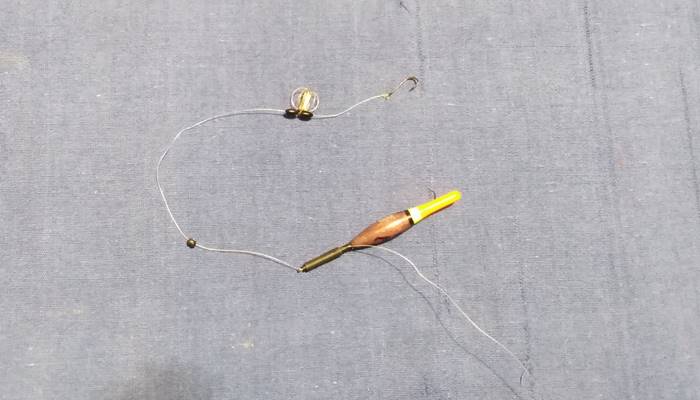
Homemade feeders for the current
 Feeder from a plastic bottle for fishing on the current [/ caption] Here they use very similar feeders to those used for fishing on the ring. They have a large feed capacity, about 2-3 kilograms of bait, and a float, with which the angler can roughly trace where he has the feeder in order to avoid hooks when wiring. There is also a rope with which the feeder is pulled ashore. They usually cast it not far – approximately at a distance of the length of the rod. There is no point in casting further, the goal is to attract fish to the shore, and not vice versa. The simplest feeder for fishing in water over the course can be made from a plastic water bottle. A bottle of 3-5 liters is required, no less. Several holes are made in it with a soldering iron, drill or knife, about 1 cm in size. so that they make up about 20-30% of the area of \u200b\u200bthe feeder on all sides. If the porridge in the course is washed out too quickly, it may not be enough until the end of fishing, and if it is too slow, then it will not attract fish. Then several pebbles are loaded through the neck – they will hold the feeder near the bottom in one place. After pouring the porridge with a funnel. Feeder from a plastic bottle for fishing for fishing on a feeder, donk, spinning rod: https://youtu.be/YAm7lA5qqAk Then twist the neck and tie the rope. A piece of foam is attached to one end of the rope – it will serve as a float. At a distance approximately equal to the depth of fishing from the float, a feeder is tied by the neck. After that, this entire structure is thrown where they will be caught, after which a rope is attached to the shore to make it easier to pull it out. Rope,
Feeder from a plastic bottle for fishing on the current [/ caption] Here they use very similar feeders to those used for fishing on the ring. They have a large feed capacity, about 2-3 kilograms of bait, and a float, with which the angler can roughly trace where he has the feeder in order to avoid hooks when wiring. There is also a rope with which the feeder is pulled ashore. They usually cast it not far – approximately at a distance of the length of the rod. There is no point in casting further, the goal is to attract fish to the shore, and not vice versa. The simplest feeder for fishing in water over the course can be made from a plastic water bottle. A bottle of 3-5 liters is required, no less. Several holes are made in it with a soldering iron, drill or knife, about 1 cm in size. so that they make up about 20-30% of the area of \u200b\u200bthe feeder on all sides. If the porridge in the course is washed out too quickly, it may not be enough until the end of fishing, and if it is too slow, then it will not attract fish. Then several pebbles are loaded through the neck – they will hold the feeder near the bottom in one place. After pouring the porridge with a funnel. Feeder from a plastic bottle for fishing for fishing on a feeder, donk, spinning rod: https://youtu.be/YAm7lA5qqAk Then twist the neck and tie the rope. A piece of foam is attached to one end of the rope – it will serve as a float. At a distance approximately equal to the depth of fishing from the float, a feeder is tied by the neck. After that, this entire structure is thrown where they will be caught, after which a rope is attached to the shore to make it easier to pull it out. Rope,Feeders for ring fishing
 The feeder from the filter can be used for both winter and summer fishing [/ caption] First you need to pull out the mesh frame. It is rigid, stands upright, has a lid that can easily be made deaf. First, it must be washed from contamination. In the lower part of the frame, a heavy lead weight is cast in the form of a plate. During the casting process, a rod with a loop at the top is inserted into it. A fishing line or a thick line will cling to it. So the mesh will not deteriorate and deform when lifted. Then porridge is tightly stuffed into the net, and a lid is made on top, which will have to tightly close the feeder.
The feeder from the filter can be used for both winter and summer fishing [/ caption] First you need to pull out the mesh frame. It is rigid, stands upright, has a lid that can easily be made deaf. First, it must be washed from contamination. In the lower part of the frame, a heavy lead weight is cast in the form of a plate. During the casting process, a rod with a loop at the top is inserted into it. A fishing line or a thick line will cling to it. So the mesh will not deteriorate and deform when lifted. Then porridge is tightly stuffed into the net, and a lid is made on top, which will have to tightly close the feeder.Homemade feeders for bottom fishing
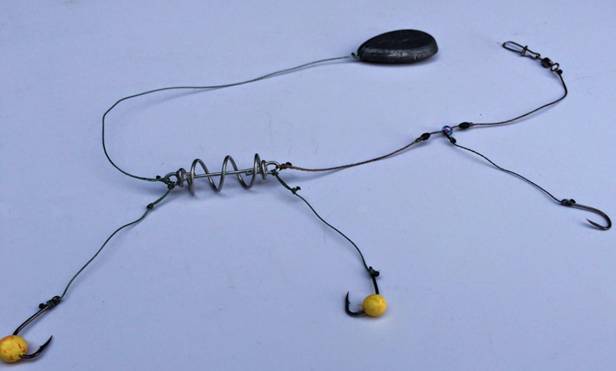
How to make a do-it-yourself fishing rod with a spring feeder
The answer is simple: use a homemade spring. Anglers make them on their own, winding them from soft thick wire. It must be fixed to the rod from the lollipop, passing through the center of the spring, through which the fishing line is threaded. To prevent the rod from falling off, it is slightly flattened at the ends, melted with a lighter.  If desired, any weight can be installed on such a feeder so that it reaches the bottom faster – usually it is a ball with a hole. It is more convenient to put the ball in the middle – so in the feeder it will help to retain food, the spring can be of a larger diameter.
If desired, any weight can be installed on such a feeder so that it reaches the bottom faster – usually it is a ball with a hole. It is more convenient to put the ball in the middle – so in the feeder it will help to retain food, the spring can be of a larger diameter.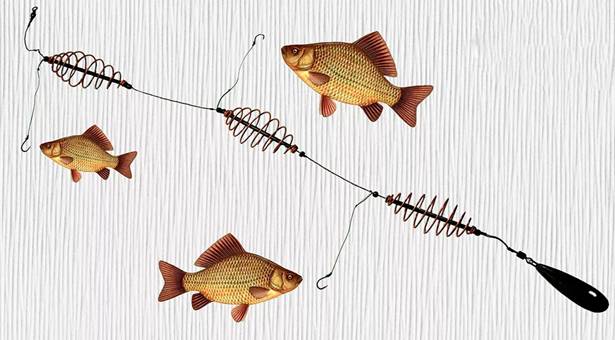
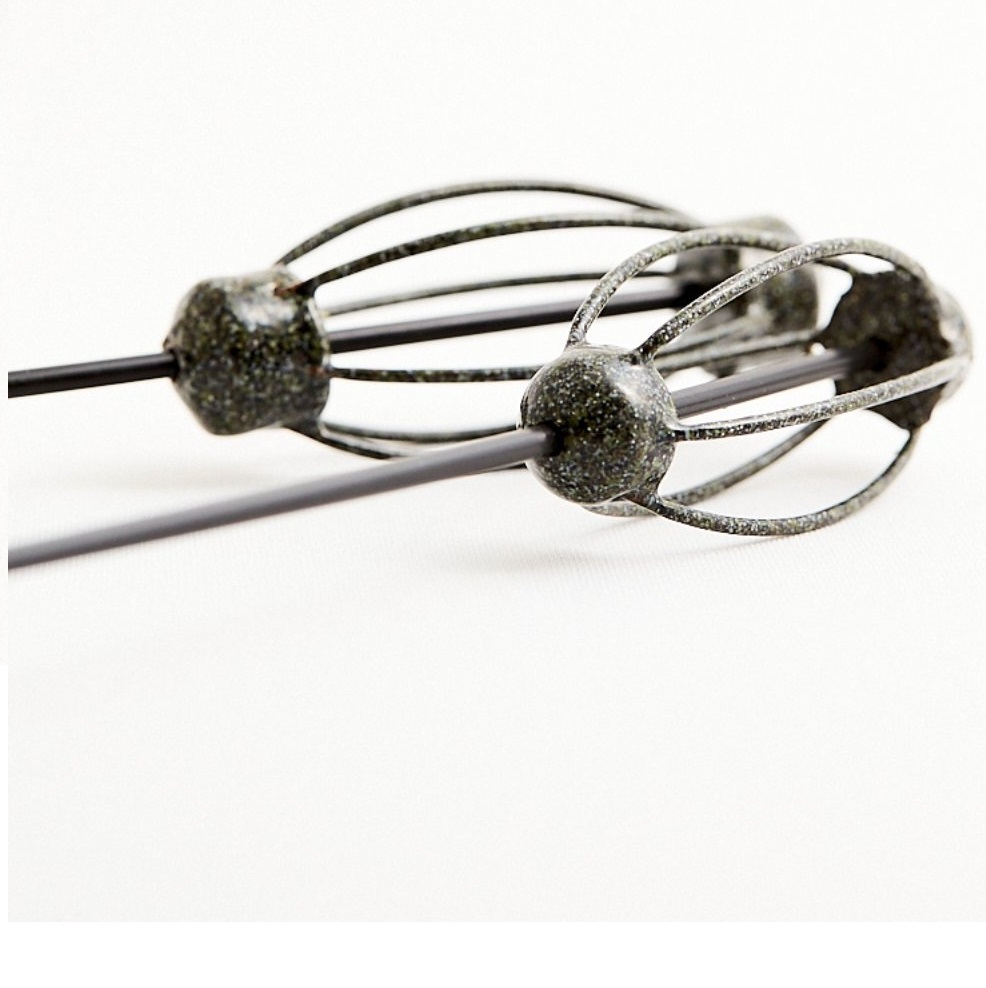 Unfortunately, the spring cannot always be used effectively. Basically, it works well in the unloaded version for crucian carp. It lies on the surface of a thick layer of grass and does not sink in too much, giving bait in all directions. For example, on a muddy bottom, it will not be very good, and here various flat feeders come to the rescue. You can also make them yourself.
Unfortunately, the spring cannot always be used effectively. Basically, it works well in the unloaded version for crucian carp. It lies on the surface of a thick layer of grass and does not sink in too much, giving bait in all directions. For example, on a muddy bottom, it will not be very good, and here various flat feeders come to the rescue. You can also make them yourself.
Flat Homemade Kormac
It is easiest to make a flat feeder for fishing with your own hands from covers – the so-called “cork”. 
For this to happen, the cork load must be at least 50 grams. A cork is a self-hooking feeder.
Unfortunately, a heavy cork often sinks completely into the soft mud and grass. A more modern, improved version of the cork feeder is the banjo feeder. A weight is attached to the bottom, this time with two screws, away from the center. Then a tube from a lollipop is passed through the center, which is fixed using various methods: for example, soldering with an ordinary soldering iron, melting the edge of the cork. A line will pass through it. After that, it can already be used – this is a rod feeder with one hook and a sliding rig. It has a major drawback: it has poor flight characteristics, although it lies well on the bottom and may not necessarily have a large mass, which is contraindicated for fishing on a muddy bottom. A more perfect feeder would be a flat feeder feeder.
Feeder feeder flat type
A flat feeder for fishing, the manufacture of which will be described below, has a flat bottom, and on top of it there are ribs that hold the bait. It has a sliding design, like the banjo, but has no sides. Due to this, she gives food faster, which allows her to attract fish better, but at the same time she consumes more food. The simplest do-it-yourself flat feeder can be made from a flat sinker-spoon of a sliding type. The production order is:
- A wire with a diameter of 1.5-2 mm is inserted into the central channel for the fishing line.
- The sinker is riveted with a hammer to make it wider and flatter. Then the wire is pulled out.
- Mark about every 5 mm on the sides of the future feeder slots with a depth of 1-1.5 mm and make them. They walk opposite each other.
- Several brackets are made from 1-2 mm wire and inserted into the slots, forming the upper frame of the feeder.
- Brackets are riveted in the slots with a chisel.
Such a feeder does its job quite well, and at the same time gives out food better than feeders with a plastic top.
It must be remembered that flat feeders will perform their function as well as possible with a small weight of sinker, up to 40 grams. With a large weight, they begin to fall into soft silt.
Homemade feeders for bottom fishing on the current
Homemade feeders for fishing in the current must have a large mass in order to keep the tackle on the bottom at one point, and also give food more slowly than those designed for still water. One of the best feeders for catching the current is the “chebaryukovka”, named after Igor Chebaryukov. This is an example of a feeder that you can make with your own hands from plastic bottles. First, a load is taken – in the original version it was a lead plate. Then they make the upper part – they take a strip of plastic from the bottle and wrap a cylinder out of it. They are clamped in the feeder, simultaneously clamping the spring on which it will be attached. After that, holes are made in the upper part with a soldering iron. You can do this in advance with a drill. Homemade feeder “chebaryukovka” for fishing on the current on the feeder, donka:
Feeders for winter fishing
These are feeders that are used when catching fish from under the ice. They are mainly designed to work with live bait, but in some cases they also use porridge. For the latter, feeder feeders can be used, which can be either shaken out at the bottom or kept in the water column so that they release food gradually. A homemade dump truck feeder is designed to shake out bloodworms or other food at the bottom in the fishing area. 
